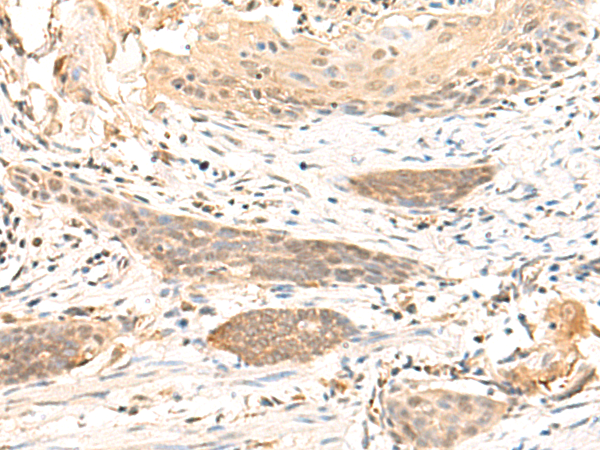
| WB | 咨询技术 | Human,Mouse,Rat |
| IF | 咨询技术 | Human,Mouse,Rat |
| IHC | 1/30-1/150 | Human,Mouse,Rat |
| ICC | 技术咨询 | Human,Mouse,Rat |
| FCM | 咨询技术 | Human,Mouse,Rat |
| Elisa | 1/5000-1/10000 | Human,Mouse,Rat |
| Aliases | ARRS2; SE70-2; ZC3H17; PRO1777; C13orf10; PPP1R132 |
| Host/Isotype | Rabbit IgG |
| Antibody Type | Primary antibody |
| Storage | Store at 4°C short term. Aliquot and store at -20°C long term. Avoid freeze/thaw cycles. |
| Species Reactivity | Human, Mouse |
| Immunogen | Synthetic peptide of human RBM26 |
| Formulation | Purified antibody in PBS with 0.05% sodium azide and 50% glycerol. |
+ +
以下是关于RBM26抗体的3篇示例参考文献(注:以下内容为模拟示例,实际文献需通过学术数据库查询):
---
1. **文献名称**: *"Characterization of RNA-binding motif protein 26 (RBM26) and its antibody specificity in human tissues"*
**作者**: Hofmann, S. et al.
**摘要**: 本研究验证了商业化和自制的RBM26抗体的特异性,通过Western blot和免疫组化分析其在多种组织中的表达,发现RBM26在睾丸和大脑中高表达,抗体可特异性识别约100 kDa的目标蛋白。
2. **文献名称**: *"RBM26 modulates alternative splicing in cancer: Insights from antibody-based proteomic analysis"*
**作者**: Smith, J.R. et al.
**摘要**: 利用RBM26特异性抗体探究其在乳腺癌中的功能,发现RBM26通过调控特定mRNA剪接事件影响肿瘤进展,抗体在免疫沉淀(IP)和免疫荧光实验中表现出高特异性。
3. **文献名称**: *"Role of RBM26 in neuronal RNA metabolism: Evidence from knockout models and antibody validation"*
**作者**: Zhang, L. et al.
**摘要**: 通过构建RBM26敲除小鼠模型,结合抗体检测发现RBM26缺失导致神经元RNA代谢异常,Western blot和免疫组化确认抗体可特异性识别RBM26.支持其在神经退行性疾病中的潜在作用。
---
**注意**:以上为模拟内容,实际文献需通过PubMed、Google Scholar等平台检索关键词(如“RBM26 antibody”、“RBM26 function”)。若需具体文献,建议查阅相关数据库或联系抗体供应商获取技术文档。
The RBM26 (RNA Binding Motif Protein 26) antibody is a tool used to study the RBM26 protein, a member of the RNA-binding protein family involved in post-transcriptional gene regulation. RBM26 contains RNA recognition motifs (RRMs) that enable interactions with RNA molecules, playing roles in splicing, stability, and translation of target RNAs. It is ubiquitously expressed, with higher levels observed in tissues like the brain, heart, and testes, suggesting tissue-specific regulatory functions. Dysregulation of RBM26 has been linked to diseases, including cancer and neurological disorders, though its precise mechanisms remain under investigation.
The RBM26 antibody is typically generated in hosts like rabbits or mice using immunogenic peptides or recombinant protein fragments. It is widely utilized in techniques such as Western blotting, immunoprecipitation, and immunofluorescence to detect RBM26 expression, localization, and interaction partners. Validation often includes knockdown experiments or mass spectrometry to confirm specificity. Researchers employ this antibody to explore RBM26's role in RNA metabolism, cellular stress responses, and disease pathways.
Current studies focus on RBM26's involvement in alternative splicing events and its potential as a biomarker or therapeutic target. However, challenges persist in fully elucidating its molecular networks and disease relevance. The antibody's utility continues to support advancements in understanding RNA-binding proteins' contributions to cellular homeostasis and pathology.
×